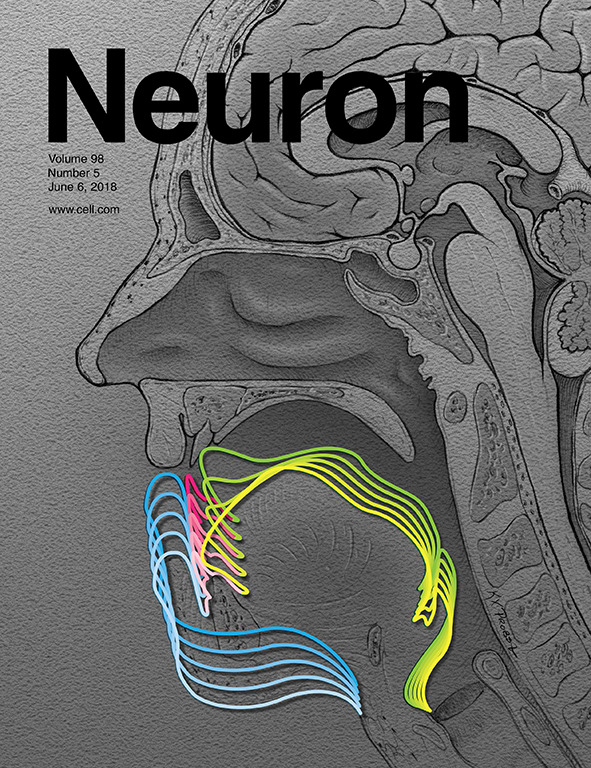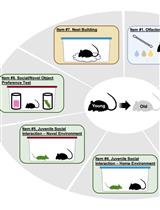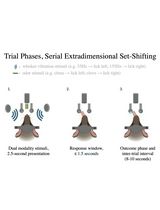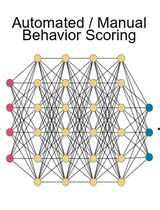- EN - English
- CN - 中文
An Alternative Maze to Assess Novel Object Recognition in Mice
一种评价小鼠新目标识别的替代迷宫
发布: 2020年06月20日第10卷第12期 DOI: 10.21769/BioProtoc.3651 浏览次数: 6975
评审: Edgar Soria-GomezDhruv Rajanikant PatelTarique R Bagalkot
Abstract
The novel object recognition (NOR) task is a behavioral test commonly used to evaluate episodic-like declarative memory and it relies on the innate tendency of rodents to explore novelty. Here we present a maze used to evaluate NOR memory in mice that reduces the time of the assay while improving reliability of the measurements by increasing the exploratory behavior. This memory test, being performed in a two-arms maze, is suitable for several strains of mice (including inbreed and outbreed) and does not require extended training sessions allowing an accurate temporal assessment of memory formation. This particular maze increases the mouse exploration time and reduces variability compared to other arenas used before to assess NOR. As both long- and short-term NOR memory can be easily and accurately quantified using this paradigm, this improved methodology can be easily applied to study pharmacological, genetic or age-related modulation of cognitive function.
Keywords: Novel Object recognition memory (新目标识别存储记忆)Background
Novel object recognition (NOR) memory task is a commonly used experimental behavioral task aimed at studying learning and memory (Ennaceur, 2010). The main postulate behind this behavioral task is that, in the presence of a novel and a previously presented (familiar) object, rodents increase their exploration towards the novel object (Ennaceur and Delacour, 1988). The increased exploration of the novel object is interpreted as indirect evidence that animals acquired a memory of the familiar object, and thus increase their exploration to the novel one. As a consequence, NOR paradigm is considered a reliable model to test hippocampal and temporal lobe function, as lesions within these brain regions abolish recognition memory (Winters et al., 2008; Broadbent et al., 2010).
There are several advantages of using the NOR task. First, NOR task takes advantage of the animal’s tendency to approach and explore novelty. Therefore, this task does not require preliminary extended training and training can happen in a single trial session, allowing a robust temporal definition of the different stages of the memory formation (i.e., acquisition, consolidation, re-consolidation and retrieval). Also, it does not require exposure to aversive or stressful stimuli stronger than novelty itself, nor it requires food or water restriction. Altogether, these factors have contributed to the growing popularity of this behavioral paradigm (Dere et al., 2007).
The NOR task has been replicated using a variety of environmental designs and objects in rodents. This task has been classically performed in a large open field where rodents navigate to explore the objects (Bevins and Besheer, 2006) or in a Y-shaped maze with very short arms were rats are exposed to two objects that they explore without the need of extensive exploration (Winters et al., 2004). NOR tasks that involve an open field environment require longer habituation periods (several days) that must be performed during several consecutive training sessions (Dere et al., 2007). As a consequence, the evaluation of long-term NOR memory seems less reliable (Sik et al., 2003). One important limitation of the open field setting is increased variability within similar experimental groups observed in terms of the interaction/exploratory time of the animal with the object. The high variability can be caused by spatial and contextual confounds together with the pro-anxiogenic effects of the environment (open field) (Hale et al., 2008). Overall, this lengthens the overall assay, reduces the accuracy of the test and entails the use of a higher number of animal in each experimental group. On the other hand, the Y-shaped maze used with rats, hinders the assessment of the locomotor activity of the animals, which in turn could bias the outcome of the test due to the short length of the corridors where the object exploration takes place.
Here, we propose a maze consisting in two arms separated by 90 degrees that has been equally called in previous publications as L- or V-Maze (Puighermanal et al., 2009 and 2013; Busquets-Garcia, et al., 2011, 2013, 2016 and 2018; Aso et al., 2012; Hebert-Chatelain et al., 2016; Aloisi et al., 2017). This maze has long corridors to minimize the context surrounding the objects and to reduce the weight of other possible cues rather than the objects themselves. These features direct the animal’s exploratory behavior towards the objects and facilitates the interaction of the animal with the object. Moreover, the arms in this maze are relatively narrow, thus reducing the possible anxiety-related bias of the open field environment. Altogether, this version of the maze maximizes the exploration time of the objects relative to the surrounding context and increases the accuracy of the test. This improved setting has been now successfully used to evaluate short- and long-term memory depending on the retention time defined between the training session and the test session (3 h and 24 h, respectively) in both inbreed (C57BL/6) and outbreed (CD-1) mice (Puighermanal et al., 2009 and 2013; Aso et al., 2012; Busquets-Garcia et al., 2011, 2013, 2016 and 2018; Hebert-Chatelain et al., 2016; Aloisi et al., 2017). Also, it improves both the variability of the assay and the reproducibility, which in turn reduces the number of mice required, the length of the sessions and the overall complexity of the protocol. However, this new NOR protocol have the limitation that it has to be adapted (e.g., light intensity, room noise, room space or objects used) every time that it is used in a novel mouse strain or when it is set up in a new animal space. Thus, it needs a pilot experiment to verify all these parameters and it might not be as flexible as an open field arena. Sor far, this specific NOR task has been used in access memory performance in a mouse model of Alzheimer (8 months or 18 months) (Aso et al., 2012), to study the acute effects of stress on recognition memory (Busquets-Garcia et al., 2016), the memory deficits in a mouse model of Fragile X syndrome (Busquets-Garcia et al., 2013; Aloisi et al., 2017) and the modulation of memory by the endocannabinoid system (Puighermanal et al., 2009 and 2013; Hebert-Chatelain et al., 2016; Busquets-Garcia et al., 2018; Robin et al., 2018; Oliveira da Cruz et al., 2019).
Materials and Reagents
- Disposable paper towels
- Mice: 8-12 weeks old C57BL/6J and/or CD1 mice (Charles River, France or any company that provide mice for laboratories)
- Water
- 70% ethanol
Equipment
- The NOR maze (see Figure 1)
We have designed and built this maze in the lab. The material used to build the maze was black or dark grey matt plexiglas.
Figure 1. Maze to assess NOR memory. Dimensions are in cm. - Two pairs of objects (see below for information regarding the objects)
These pairs of objects must be first validated in mice (see Procedure) to guarantee no intrinsic preference or aversion. - Experimental room with adjustable light (30-50 lux)
- Real-time video acquisition system
- Casual Stopwatches or any computer application to count the exploration time
Software
- Any video Acquisition Software
- Behavior Scoring Panel-(c) 2008 by A. DUBREUCQ Version 3.0 beta. A home-made software that allow us counting the exploration time.
Note: If possible and to avoid any confounding factor, it is recommended that the experimenter is not present in the same room where the mouse is performing the task.
Procedure
文章信息
版权信息
© 2020 The Authors; exclusive licensee Bio-protocol LLC.
如何引用
Oliveira da Cruz, J. F., Gomis-Gonzalez, M., Maldonado, R., Marsicano, G., Ozaita, A. and Busquets-Garcia, A. (2020). An Alternative Maze to Assess Novel Object Recognition in Mice. Bio-protocol 10(12): e3651. DOI: 10.21769/BioProtoc.3651.
分类
神经科学 > 行为神经科学 > 学习和记忆
神经科学 > 行为神经科学 > 认知
您对这篇实验方法有问题吗?
在此处发布您的问题,我们将邀请本文作者来回答。同时,我们会将您的问题发布到Bio-protocol Exchange,以便寻求社区成员的帮助。
Share
Bluesky
X
Copy link












